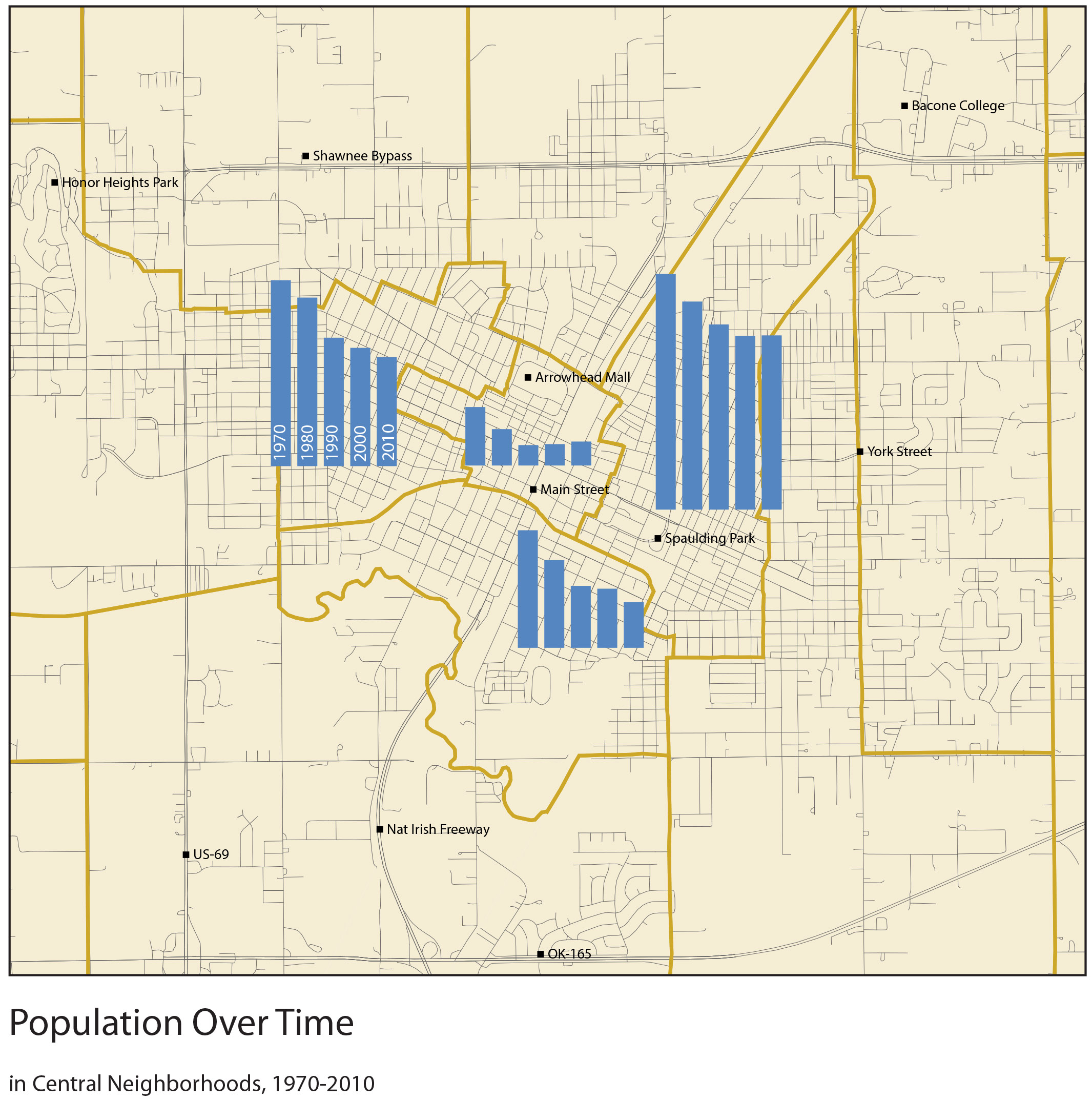As in many cities, the central part of Muskogee has lost population over the last several decades. In the 1970 Census, four central neighborhoods accounted for 18,000 people- Nearly half of Muskogee’s 1970 population of 37,000. However, by 2010, the Census showed a total population in Muskogee of 39,000, but less than 30% of people were living in central areas.
The map and bar graphs show where these population losses occurred between 1970 and 2010.
The challenge of restoring central city residential populations is not unique to Muskogee.
A similar area of Oklahoma City consisting of downtown and older residential neighborhoods, experienced similar losses from 1970 to 2010. In Oklahoma City, this comparable area fell from 197,000 to 144,000 people. The central area of Oklahoma City dropped from 53% to just 25% of the total city population in this time.

While the population of Muskogee stayed about the same, more and more people left the central areas and new developments were created in outer areas. These maps of population density in 1970, 1990, and 2010 show a ‘hollowing out’ pattern that is seen in many cities.
As residents left downtown Muskogee, businesses had fewer customers nearby. When considering the hope to revitalize downtown Muskogee with new businesses and services, it is important to remember that central Muskogee once had a much larger population. A larger, denser population in the city’s center made the economics work for many businesses.
To restore the market for businesses and services in downtown Muskogee, one piece of the puzzle might be creating new housing and rehabilitating older houses or apartments. New housing opportunities in the immediate downtown area, as well as the surrounding historic neighborhoods, will help support new businesses downtown.



